Inaugural Parade
Immersing myself in matters of history is second nature. More specifically, matters of African American history are on my short list of things I enjoy engaging in the most. To that end, I often have to be reminded that some of those matters of history of which I indulge are much bigger than me therefore they should be shared with an audience that wishes to know more about African American history. Through this blog you have been reading about The Slave Dwelling Project one of my deep indulgence into the extant places where enslaved African American lived, so deep that I have spent a night in thirty eight of these dwellings in twelve states since 2010. My publisher alerted me that I was about to engage in something rare that current and future followers of the blog might also be interested.
My other delve into African American history is that for over 20 years, I have been a Civil War reenactor. My Civil War reenacting group is Company I, 54th Massachusetts Reenactment Regiment. The 54th Massachusetts Volunteer Infantry was one of the first African American Civil War units raised in the north and was portrayed in the academy award winning movie Glory in 1989. Being one of few African American Civil War reenactors in the United States, we represent approximately 200,000 African Americans that served the Union Army and Navy during the American Civil War. It was this affiliation that got me an invitation to march in the presidential inaugural parade that occurred on the Martin Luther King holiday on January 21, 2013. I would march with Company A, my fellow Civil War reenactors from Boston, Massachusetts.
The opportunity to march in the parade was not unique for I had done the very same thing four years prior with the same group. That experience taught me to prepare better for the occasion. My new brogans that I ordered for the occasion had gotten within a few miles from my home before UPS shipped them back to the sender because they could not figure out my address. The time that I received them only gave me a week to start the breaking in process which required me to wear them to work at Magnolia Plantation one day. I shined my brass and had the buttons sewn on my Civil War uniform and the pants hemmed accordingly. From the sporting goods store, I purchased hand and toe warmers. While packing for the trip, I discovered that my thermal underwear was insufficient for what I was about to experience therefore I had to purchase more. I recalled in 2009 standing in the below freezing cold for two hours waiting for the parade to begin so this time I would arm myself with snacks aplenty.

When I arrived in Washington, DC at the designated place to stay late in the evening of Saturday, January 19, the gentlemen from Boston were already there. Our host, Frank Smith, President of the African American Civil War Museum found a row house in a nice neighborhood that we could rent for the occasion. To my surprise, it would not be necessary for me to spread my sleeping bag on the floor because an army unit provided cots for all the men and women staying in the house. The only challenge would be everyone sharing the one rest room that was in the house. To that end, ten minute time limits had to be established and I chose the first slot at 4:00 am. Upon seeing Company A, we picked up where we left off because more than half of the guys participated in the inaugural parade four years earlier. That night some of us attempted to go to the world famous Ben’s Chili Bowl but were in for a rude awakening when we saw the line of people who got there before us.
Sunday, January 20 was packed with activities. An early morning muster gave us an indication of how we would function as a group. Our formation brought from the neighborhood various onlookers, picture takers and inquirers. Breakfast was prepared by an Elk’s lodge located two doors from the house where we stayed. We then proceeded in a loose formation to the African American Civil War Monument, 1925 Vermont Avenue NW, where we drilled and interacted with spectators.

After the drill session, we went across the street to the Civil War Museum where we listened to a rousing and informative lecture about African Americans in the Civil War given by the museum curator Hari Jones. We were then shuttled over to 18th Street and Columbia Road to participate in the Slavery to Freedom in Adams Morgan Walking Tour. One stop on the tour was the site of John Little Manor House. Mr. Little was a cattle farmer who owned slaves. The tour concluded at the African American and Quaker cemeteries at Walker Pierce Park. Several African American Civil War soldiers and sailors are buried there.

That night we all gathered at the Elk’s Lodge to watch the New England Patriots versus the Baltimore Ravens. It was a precarious situation for me because being so close to Baltimore, Maryland, I was hanging with guys from Boston so I governed my actions accordingly. French fries, chicken wings and beer made the gathering more memorable. Needless to say, the result of the game was not favorable for my colleagues from Boston.
Monday, January 21, Dr. Martin Luther King’s holiday, the day of the inauguration, we all mustered outside at 5:00 am for inspection. While outside we discovered that a special guest would join us. Accompanying Company A in the parade would be the honorable Michael Crutcher who would portray Frederick Douglass.

Douglass, who was instrumental in convincing Abraham Lincoln to recruit Black soldiers for the Union cause, had two sons , Charles and Lewis, who were members of the 54th Massachusetts Volunteer Infantry.
The bus that would take us to the Pentagon for processing would not arrive for another hour or so which gave us some time to relax. On the bus ride that seemed to have taken almost an hour, we finally arrived at the Pentagon where again we had to wait. Having been preprocessed by providing our social security numbers and a photograph at least two weeks prior, the physical processing went a lot more smoothly than 4 years prior.

Knowing that our functional Civil War muskets had to be disabled, most of the men had already done this by removing the nipple from their weapon. For those whose nipple could not be removed, a tooth pick was inserted into it and broken off. The rest of the process mirrored that of what one would encounter at an airport before boarding a plane. After processing and before we got back on the bus, I along with a member of Company A was chosen to do live interviews for ABC News and NPR. Unfortunately, when we finally got to the interview area, other parade participants were being interviewed and were not finished before we were ordered to be escorted back to our group to board our bus that would take us to the staging area.

I recalled that four years prior that bus ride gave us a great view of the magnitude of the crowd that was in Washington, DC for the inauguration. That was not the case this year but we did go past the new Martin Luther King Monument which gave everyone on the bus an opportunity to reflect on the significance of the day. At the staging area, one Civil War reenactor from Philadelphia who did not get processed at the Pentagon tried to join the ranks. He was not with us one minute before security pounced and removed him from our ranks so he could not join us in the staging area tent. Activities inside the tent were more organized than four years prior, there was a big TV screen that allowed everyone to see the inauguration process. We were seated next to Company B, other African American Civil War reenactors from Washington, DC. It became obvious to many of us in the ranks that we all should be marching together but we were not the decision makers. There were groups galore inside the tent but we were advised to stay together and not roam alone.
After what seemed like hours, we finally went outside to take our position for the parade. Interestingly, the gentleman who could not join us in the tent found his way back to our ranks and was placed right beside me which made me a little nervous. When the procession began to move, I was impressed because four years prior it took hours before we moved. And then we stopped, the memory of standing for hours in the cold four years earlier came rushing back. After a series of starts and stops, we began to move along at a constant pace. The spectators along the parade route were much more abundant than four years prior. Every one hundred yards or so, an announcer would make known to the crowd what unit was approaching. About half way into the parade, the older gentlemen in the group began to waiver. The series of command for repositioning our weapons were getting pointless as every position became painful.
And there it was, the presidential reviewing stand. Being on the extreme left of the formation, the side closest to the president, I was forewarned that when the command eyes left was given I had to continue to look forward to maintain the decorum of the formation. Knowing this I had to get a good look at the Commander in Chief as we approached and before the command was given. As we passed the presidential enclosure, everyone in the formation, despite their age and physical condition seemed to disregard the pain that they were enduring. Once the formation passed the presidential enclosure, it was apparent that we all lost our swagger and stamina but there were still people along the route and we had to perform accordingly for an additional two hundred yards or so.
Finally, we got to the busses where we could break the formation. After receiving the order to proceed in a loose formation to the bus, our headcount revealed that two members did not make it to the end. Provisions for such an occurrence had already been made and the two men had been transported to the bus and were there before the rest of us got there. Later that night, I would decline the opportunity to hang out with some of the younger guys as they would again attempt to go to Ben’s Chili Bowl. I stayed in the house with the older group and we all ordered a pizza. When the younger group returned, they let me know that this time they were successful in getting into Ben’s Chili Bowl.
Tuesday, January 22, the day after the march, I awoke and checked the weather and discovered it was 20 degrees and only going to reach 23 degrees that day. I gave thanks that the inaugural parade occurred the day before when it was 25 degrees warmer. I was also thankful that I was going to put 516 miles of south between me and Washington, DC while the guys from Company A were going in the opposite direction into colder weather. Before I left, I had to again thank Company A for letting me join them for the second inaugural parade for first African American president of the United States. I vowed to them that I will prepare a place for them in Charleston, SC when they come during the week of July, 14 – 21, 2013 to participate in the 150th Anniversary of the Assault on Batter Wagner, the battle that was depicted in the movie Glory.
The institution of slavery suppressed our ancestors by denying them the opportunity to be educated. Any evidence of the enslaved being educated could meet with harsh punishment. One cumulative result is that African Americans have been playing catch up in recording our own history. To that end, a lot of African American history that should have been recorded has gone to the grave with some of our ancestors. I hereby thank my blog publisher for reminding me that I do have an audience and that some of the things that I do that I take for granted are worthy of being shared with that audience.

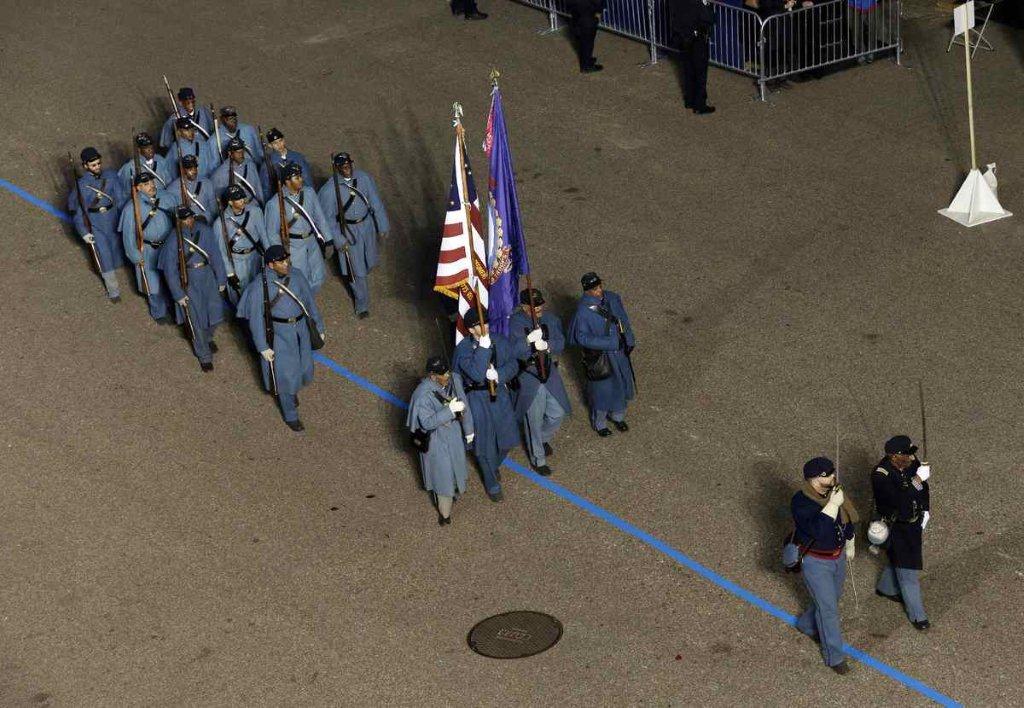
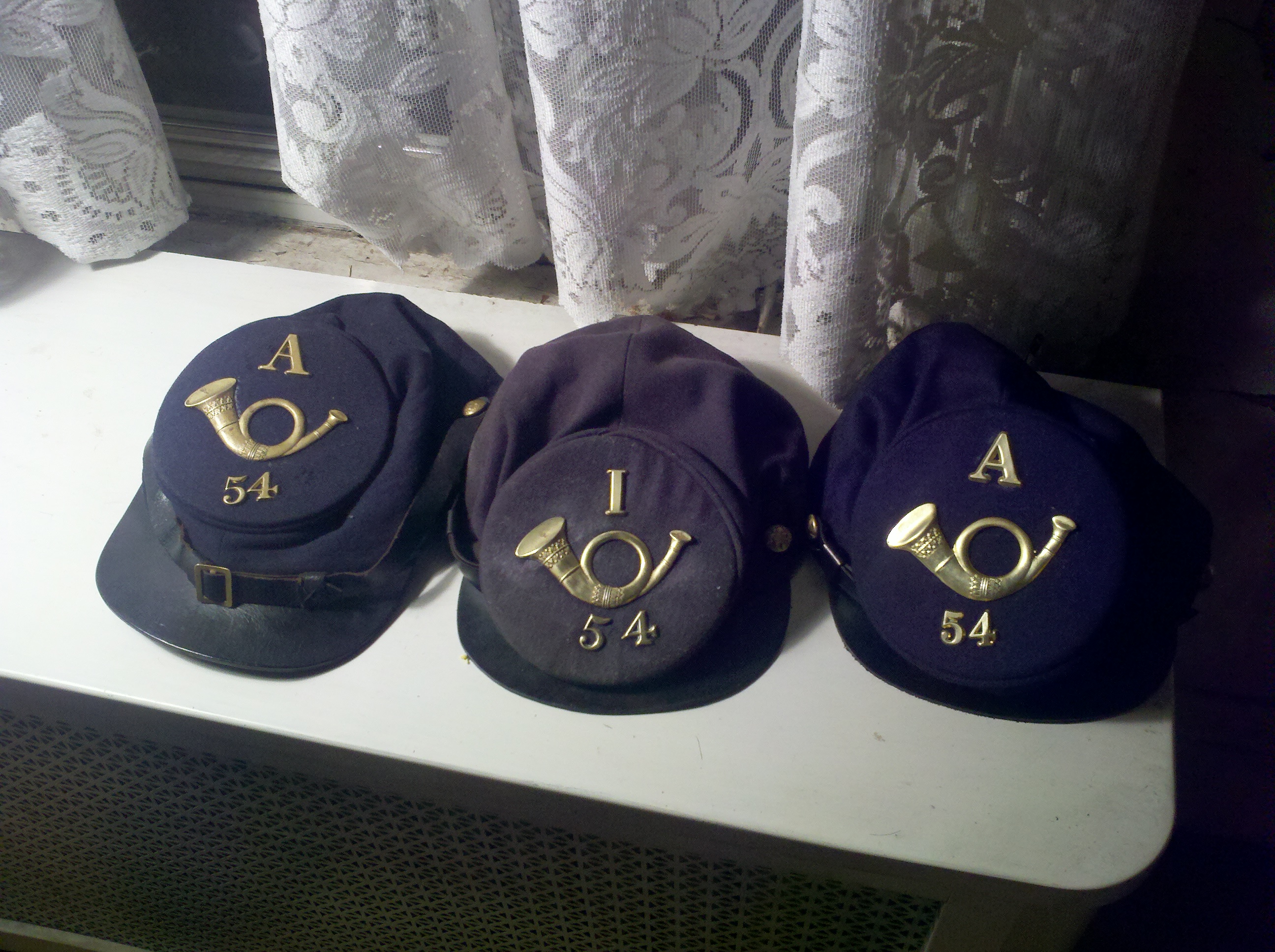
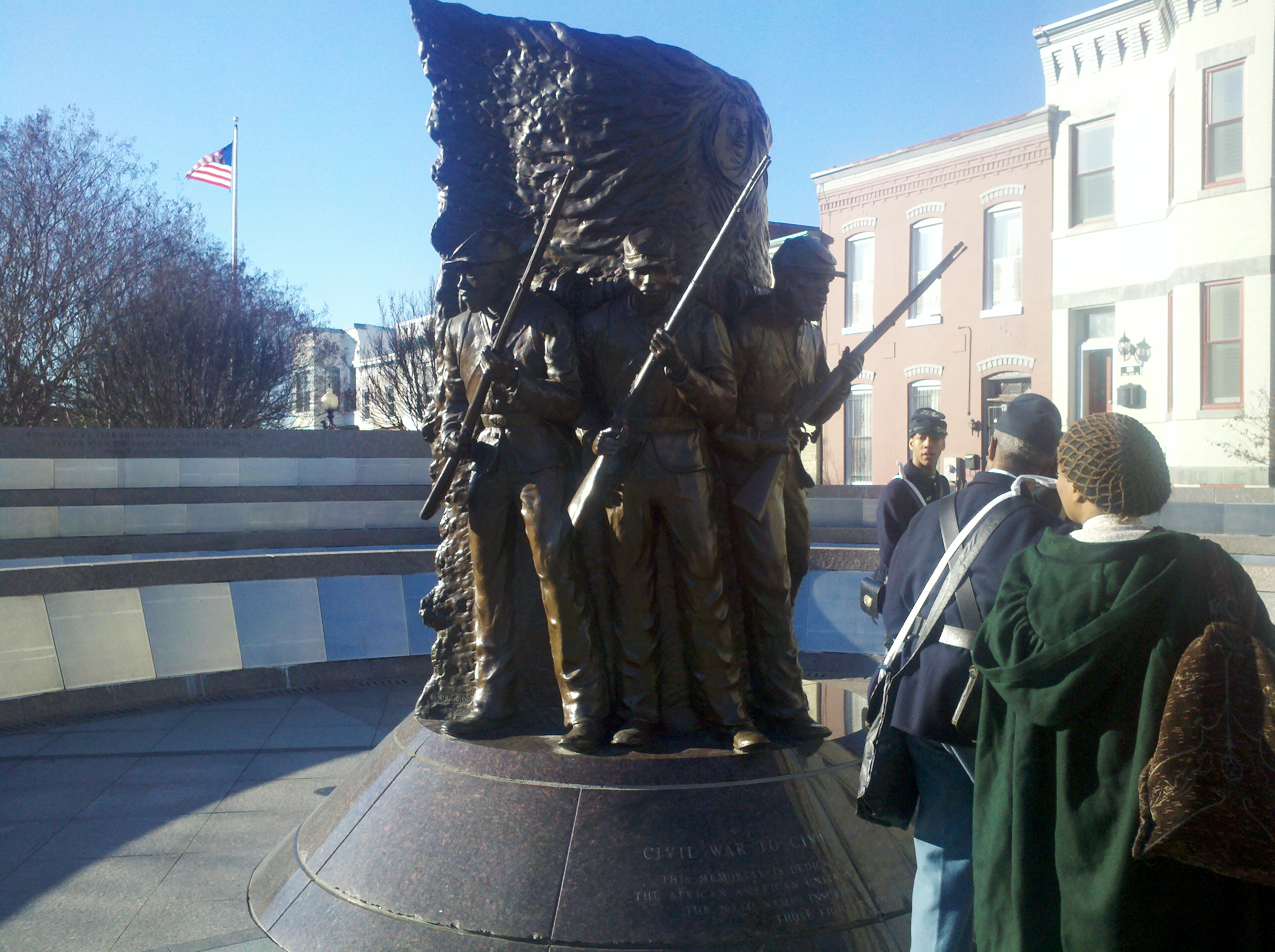
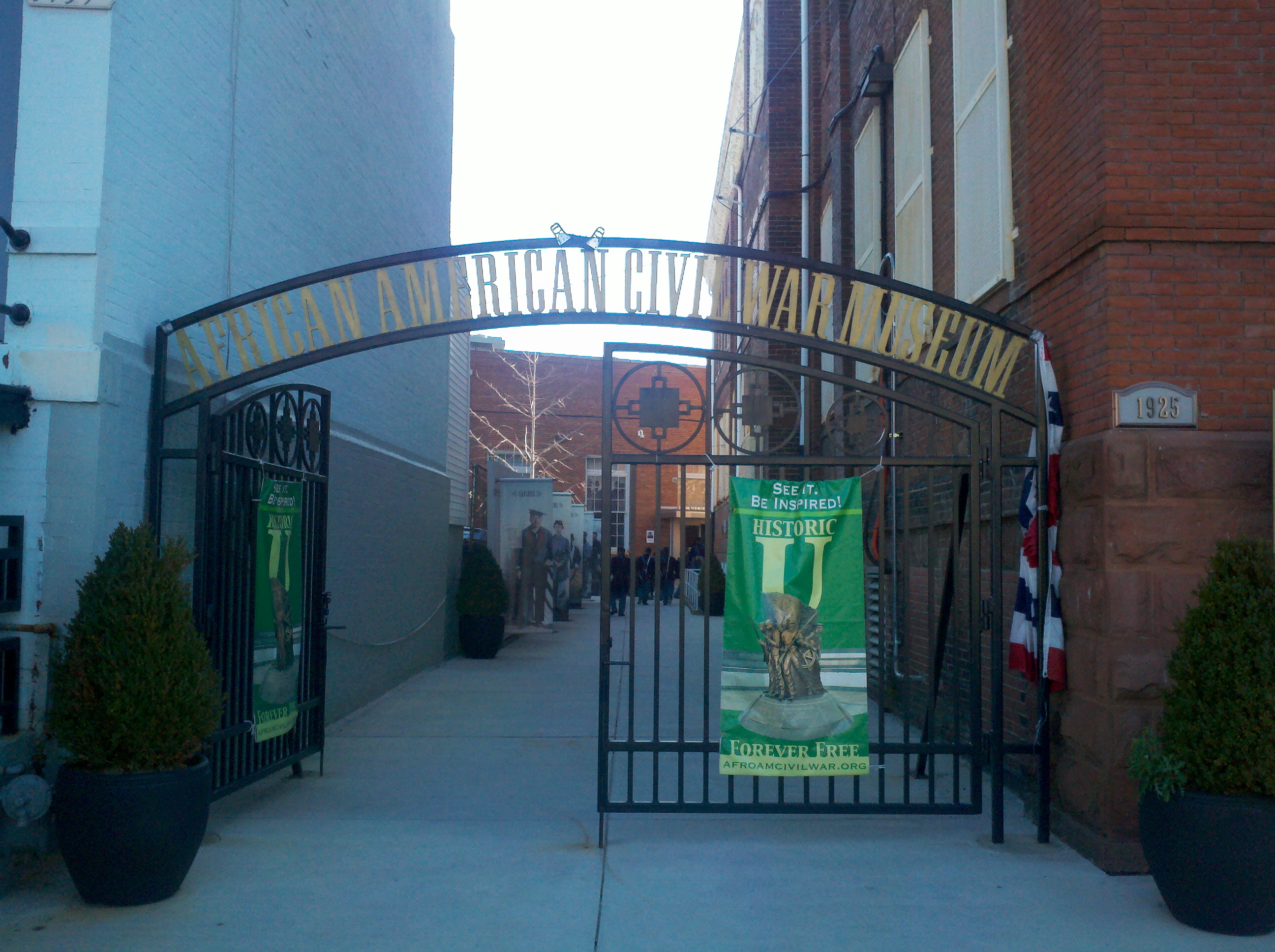

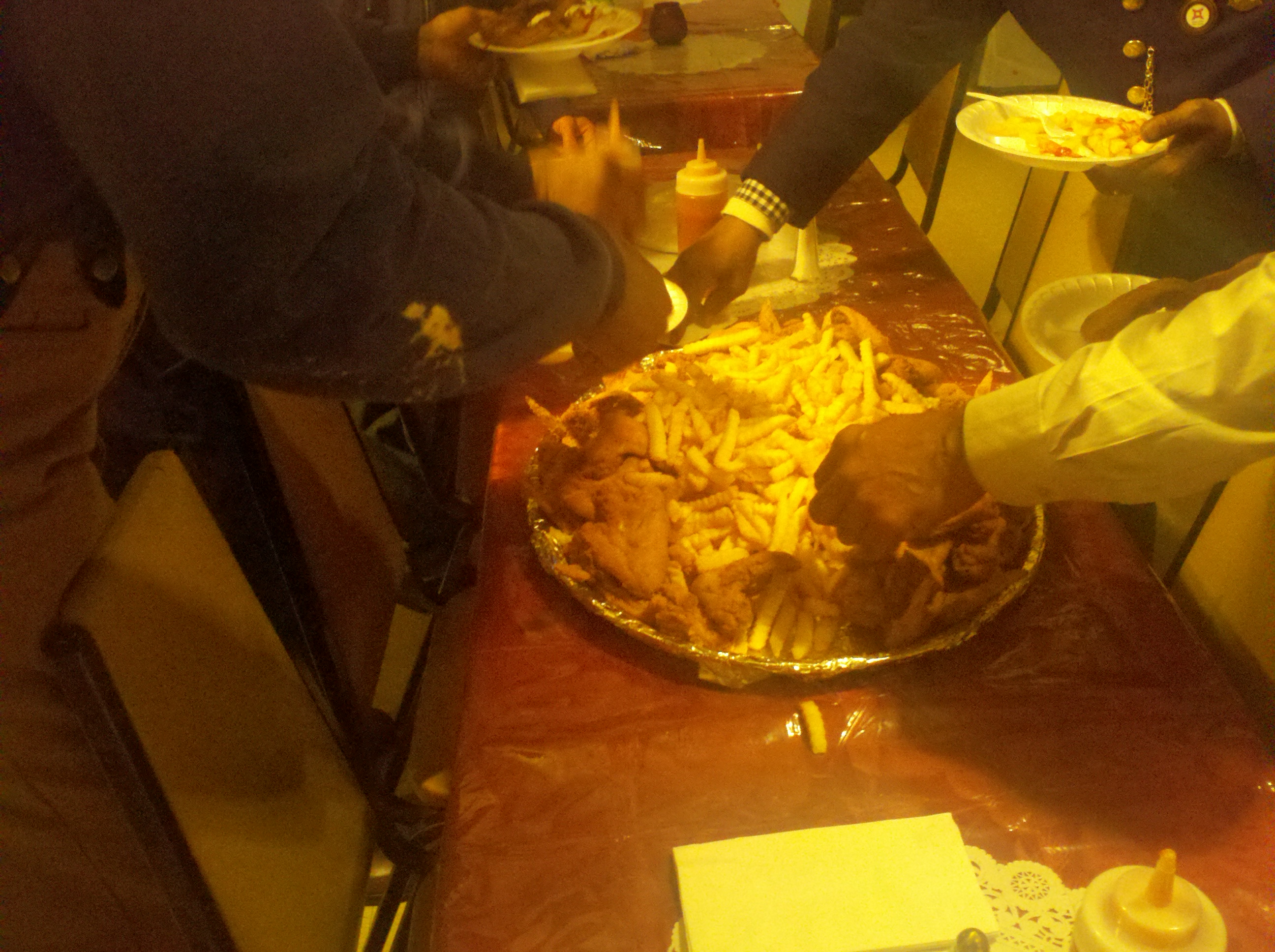
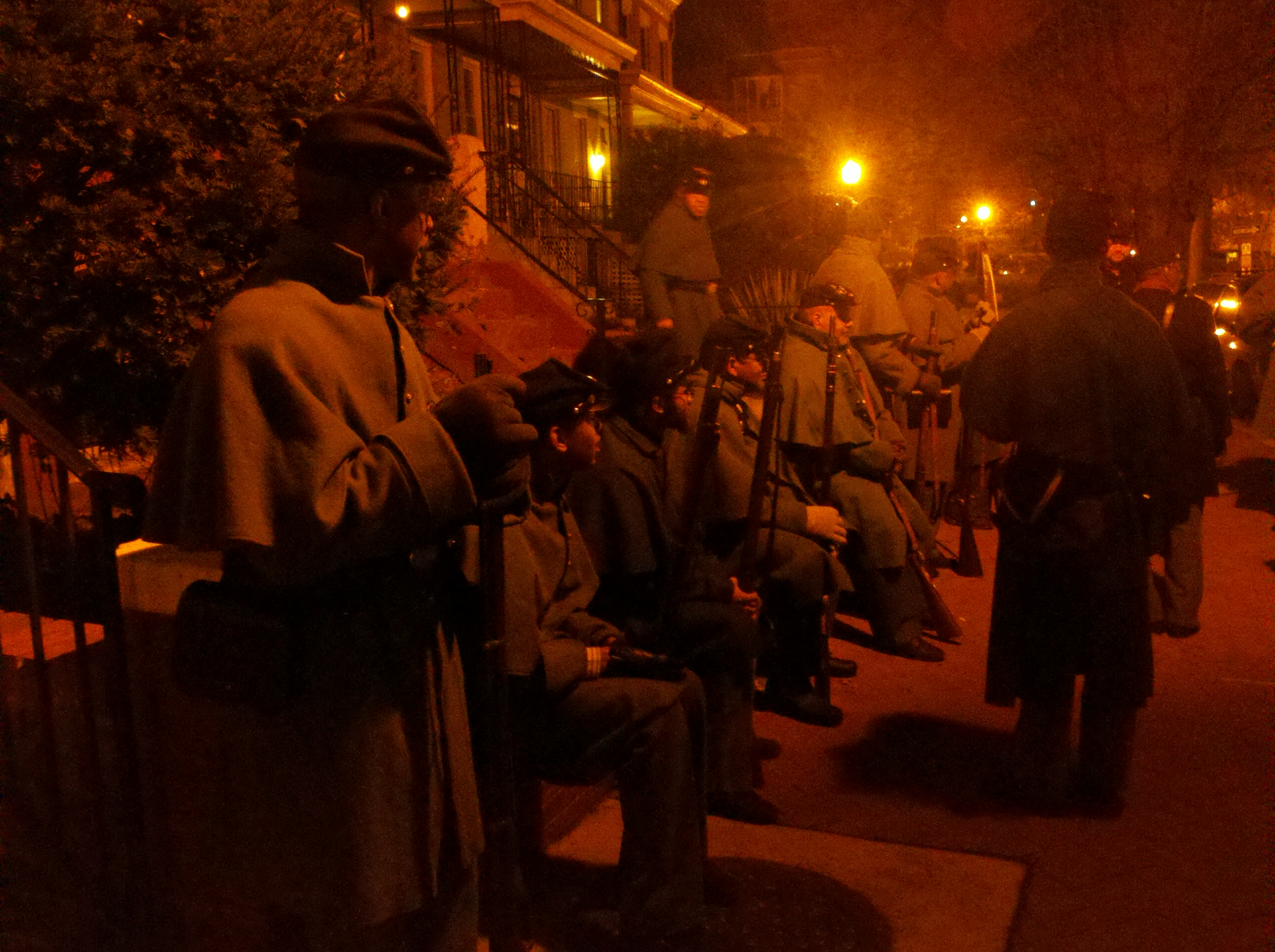
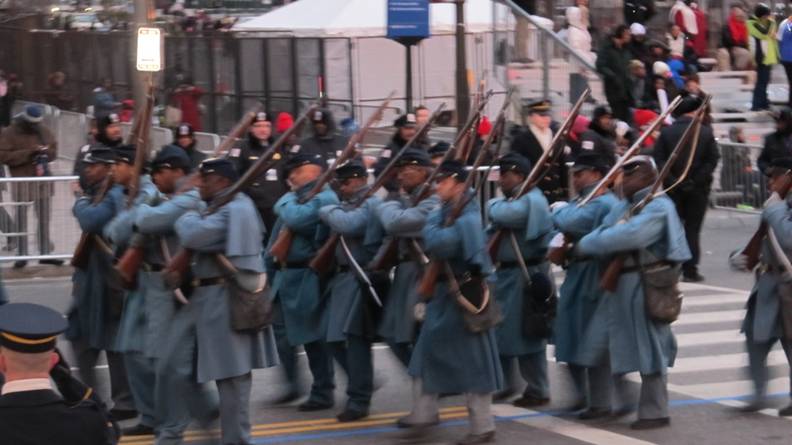
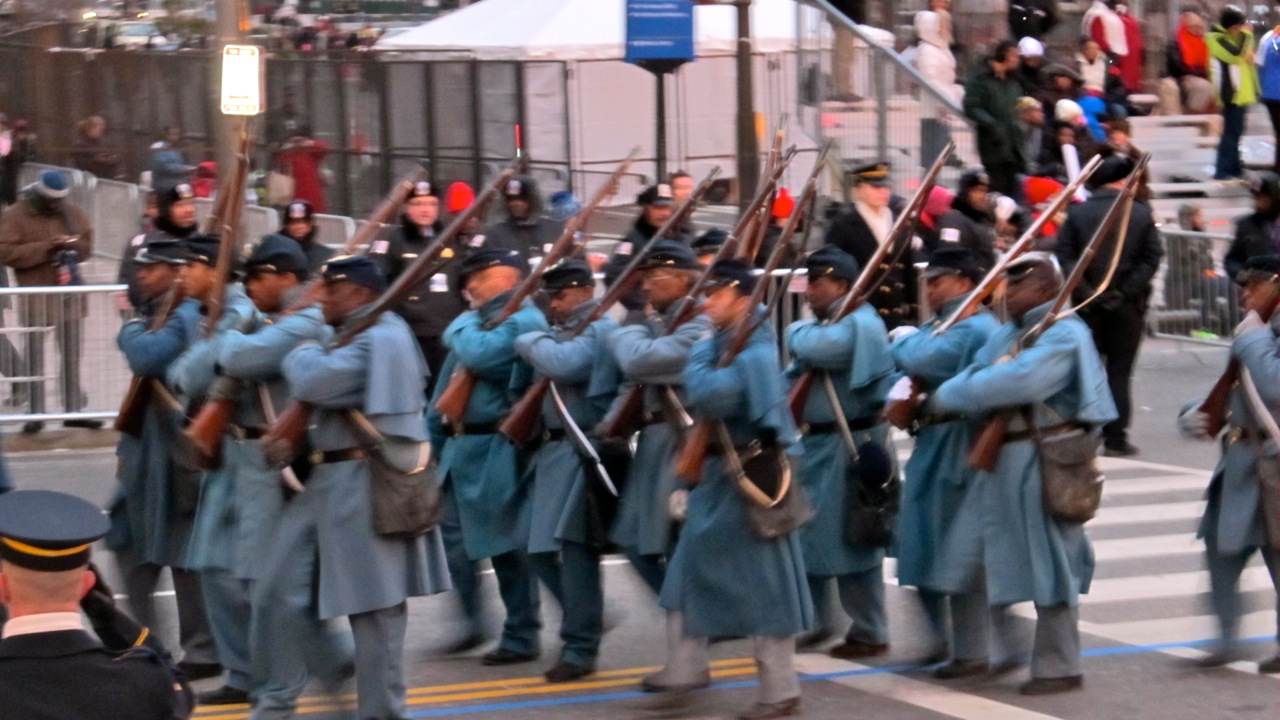

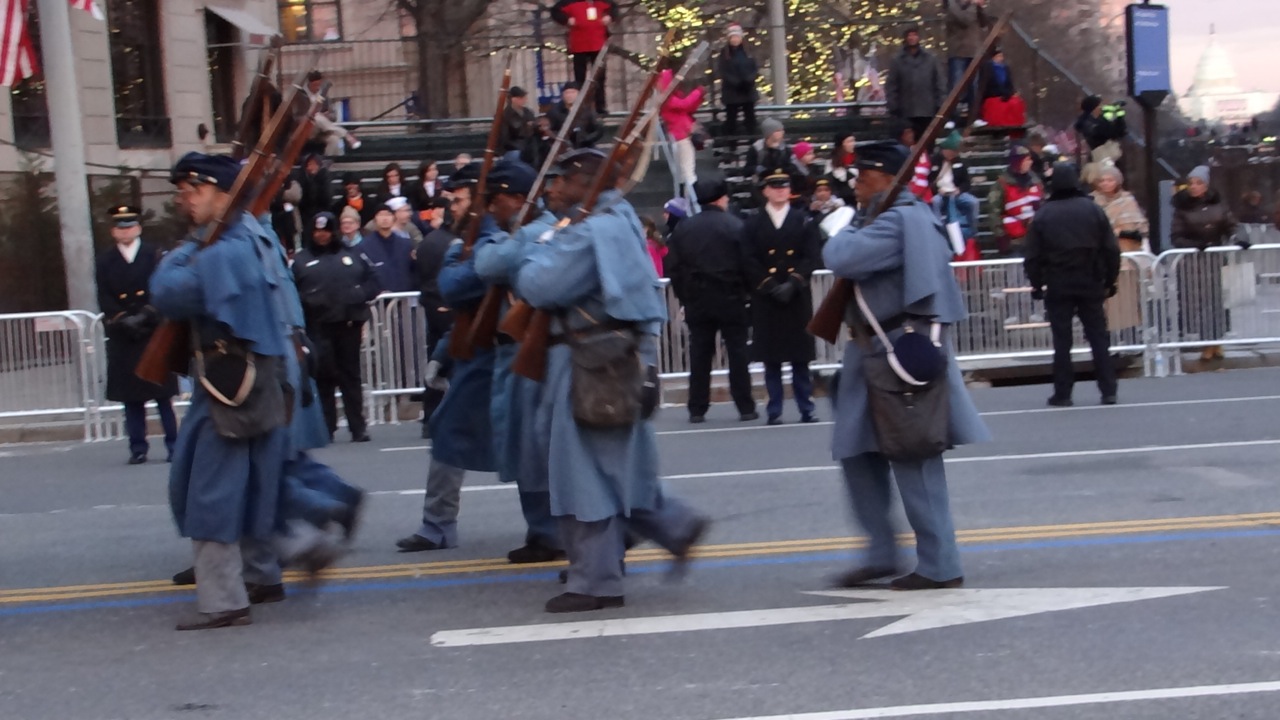
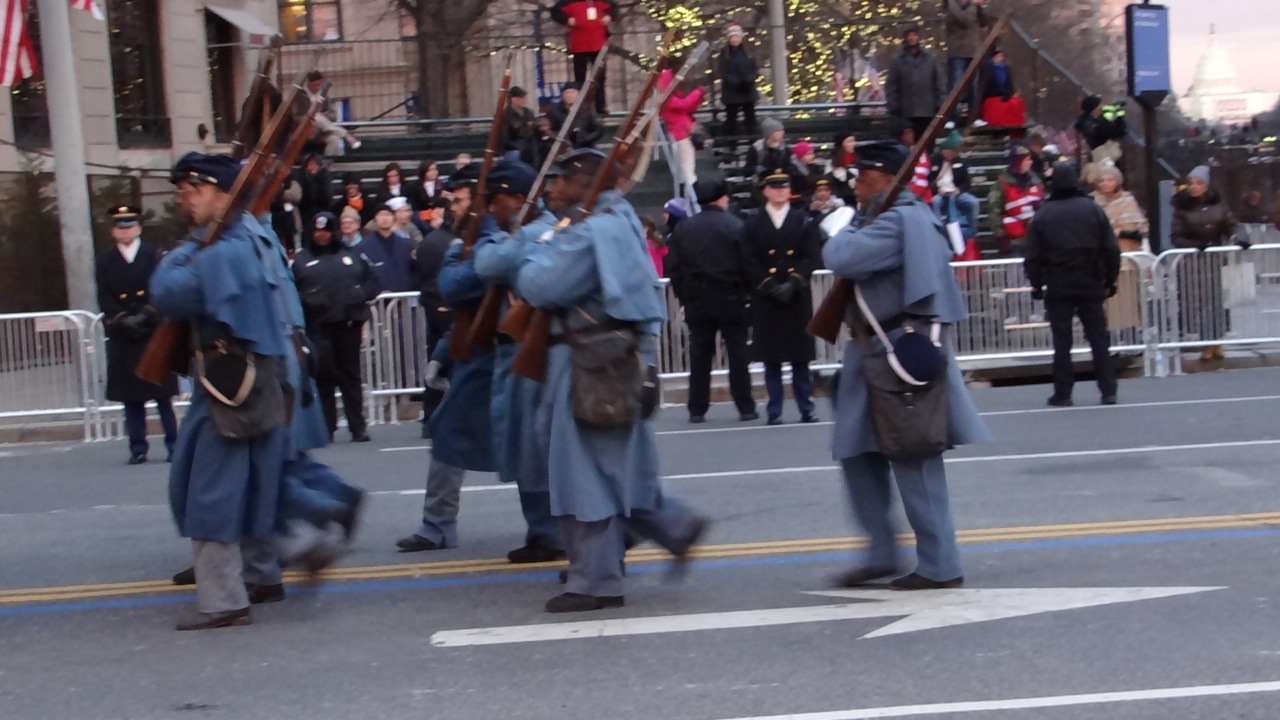
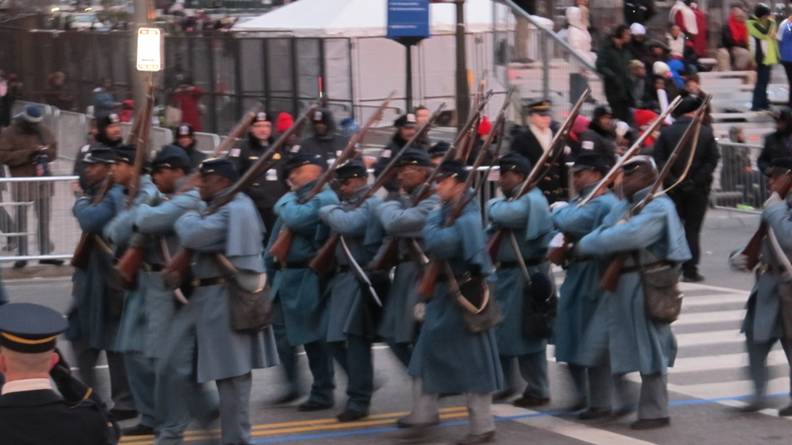
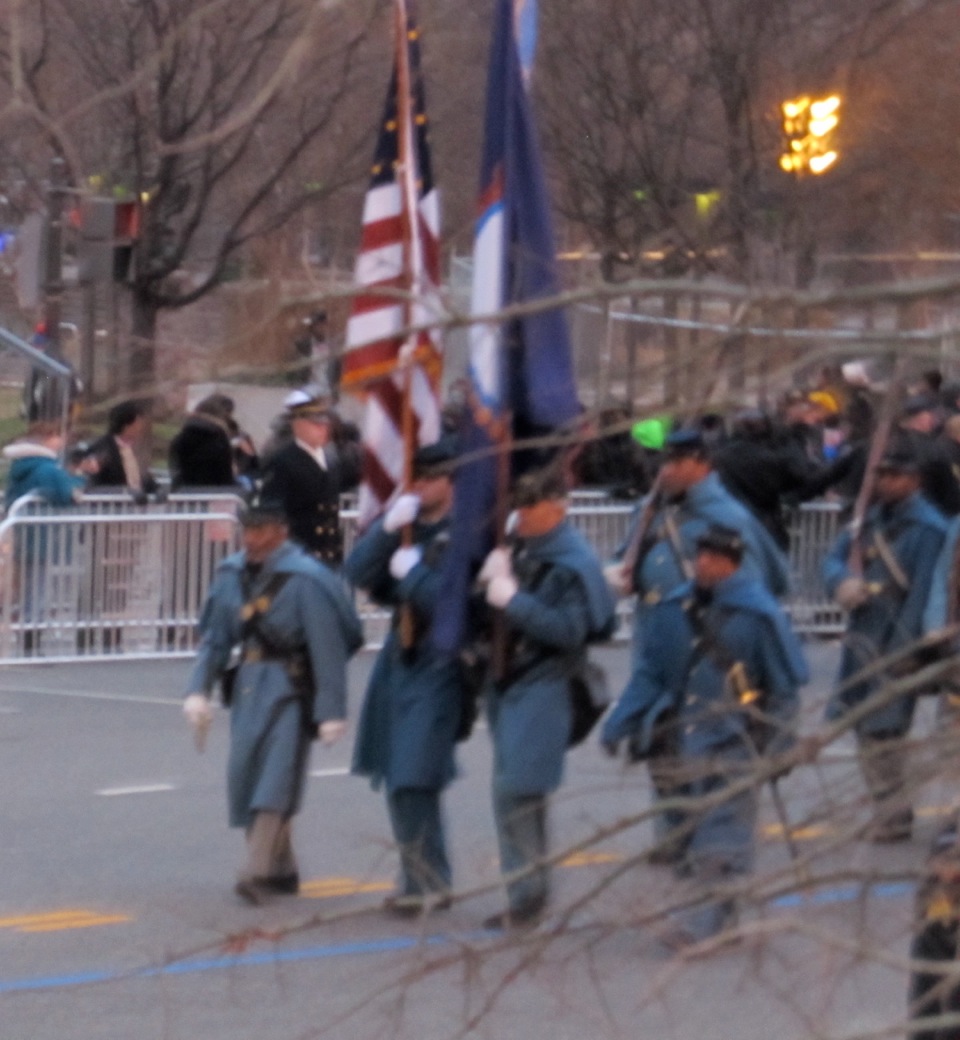








Dear Mr. McGill,
EXCELLENT! Thank you and God Bless You for all you do!
Sincerely,
Mrs. Benny White
Greetings Joe. It was an honor and privilege, once again, to share in such an historical event, with you in our ranks. Thank you for documenting, so well, in words and photos a memory of a lifetime. I look forward to my first visit to the site of the the Assault on Wagner during the commemoration of 150th anniversary. Lastly let me say how pleased I am with the time and care you take to tell our history with the world. Best regards, Lady, Tonya Grimes
What a proud honor Joe. Salute to you and your efforts to keep our history alive.